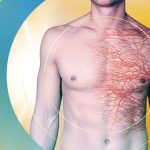Scientists have discovered that people’s bodily functions – including their heartbeat and breathing – unconsciously synchronise when they are sharing an experience.
That experience can be shared even if the people are far apart, as long as they are attentively listening to the story or watching a performance, according to a new paper published in the journal Cell Reports.
The research, from scientists at the City University of New York, adds to information demonstrating similar synchronisation but challenges the assumption that this was based on people in the same physical space interacting in some way.
“What we have found is that the phenomenon is much broader, and that simply following a story and processing stimulus will cause similar fluctuations in people’s heart rates. It’s the cognitive function that drives your heart rate up or down,” explained Professor Lucas Parra.
Professor Parra, the co-senior author on the study, from City College of New York, worked with a researcher at the Paris Brain Institute to uncover how these shared experiences develop.
“What’s important is that the listener is paying attention to the actions in the story,” adds co-senior author Jacobo Sitt. “It’s not about emotions, but about being engaged and attentive, and thinking about what will happen next. Your heart responds to those signals from the brain.”
The team conducted a number of experiments to explore the role that consciousness played when it came to an audiences’ heart rates synchronising.
SpaceX: Who are the civilians on the Inspiration4 mission?
UK scientists make ‘cosmic concrete’ with astronaut blood and space dust
High hopes for Ebola vaccine after trial shows strong immune response
In the first experiment, volunteers listened to an audiobook of Jules Verne’s ‘20,000 Leagues Under the Sea’ while hooked up to an electrocardiogram.
As they listened their heart rates changed based on what was happening in the story, and the researchers found the majority showed increases and decreases in their heart rate at the same points in the narrative.
In the second experiment, the volunteers watched short instructional videos without any emotional content, and the researchers found their heart rates again shared similar changes.
Following this, the participants were asked to watch the videos again but this time counting backwards in their heads – something which resulted in a drop in synchronisation of heart rates, confirming the importance of attention.
In a third experiment, the subjects listened to children’s stories, some while attentive and others while distracted, and were asked to recall facts from the stories, and they found that more synchronisation predicated better recall.
Professor Parra said that this research is also important for understanding mindfulness and the connection between the brain and the body.
“Neuroscience is opening up in terms of thinking of the brain as part of an actual anatomical, physical body,” he said. “This research is a step in the direction of looking at the brain-body connection more broadly, in terms of how the brain affects the body.”






















